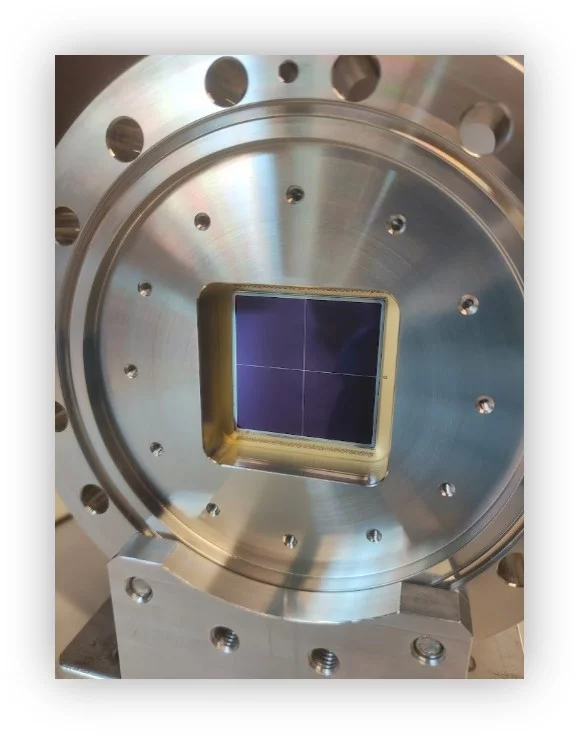The PSI Photon Science Detector Group has developed the first single-photon-counting pixel detector capable of detecting soft X-rays down to 530 eV. This breakthrough was achieved by combining EIGER readout chips with novel inverse LGAD sensors, developed in collaboration with and fabricated at Fondazione Bruno Kessler (FBK, Italy). The detector is now in user operation for ptychographic applications, where it has already enabled significant scientific results at the Fe L₃-edge (707 eV) and even at the O K-edge (530 eV), demonstrating superior detection performance compared to commercially available state-of-the-art detectors.
Detecting soft X-rays has long posed a challenge for scientists. Low-energy X-rays are absorbed only within very shallow depths of a detector, reducing efficiency, and the small amount of charge they generate makes it difficult to distinguish true photon signals from electronic noise. As a result, single-photon counting—a key detection technique at synchrotrons —has so far been out of reach in this energy range.
To overcome these limitations, researchers from the Photon Science Detector Group at the PSI, in close collaboration with the sensor foundry FBK, have developed a new class of sensors: inverse Low Gain Avalanche Diodes (iLGADs) optimized specifically for photon science applications. By exploiting the sensor’s internal signal multiplication, the weak signals produced by low-energy X-rays can be amplified above the noise threshold. In addition, a custom-designed entrance window ensures highly efficient photon absorption even at low energies.
By integrating this novel iLGAD sensor with PSI’s EIGER single-photon-counting readout chip, the team has successfully built the first hybrid pixel detector capable of single-photon counting below 1 keV. The resulting 4 × 4 cm² detector module—comprising a 2 × 2 array of EIGER chips bump-bonded to the world’s largest iLGAD sensor—is now routinely used by synchrotron users.
The detector’s outstanding performance has been demonstrated in ptychographic imaging experiments, achieving high-quality results at the Fe L₃-edge (707 eV), particularly interesting for the study of magnetic phenomena, and extending detection capabilities down to the O K-edge (530 eV).
This development marks a major milestone for soft X-ray instrumentation, establishing a new benchmark for detector technology and paving the way for advanced imaging at previously inaccessible photon energies. The technology will be a key asset for experiments at the upcoming SLS 2.0 upgrade, supporting the next generation of soft X-ray applications.
These results have been published in Communications Physics.


